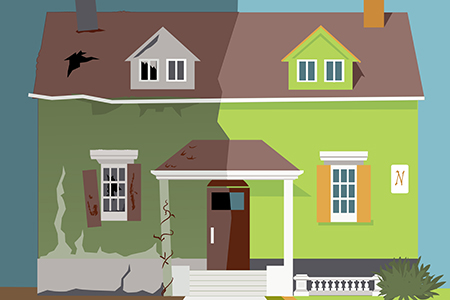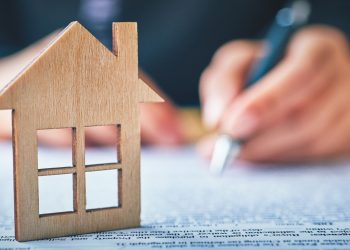A total of 51,434 U.S. single family home and condo sales were completed flips in the second quarter of 2016, according to a new RealtyTrac Q2 2016 U.S. Home Flipping Report. These numbers are up 14 percent from the previous quarter and up 3 percent from a year ago to the highest number of home flips since Q2 2010 — a six-year high.
For the report, a home flip is defined as a property that is sold in an arms-length sale for the second time within a 12-month period based on publicly recorded sales deed data collected by ATTOM Data Solutions in more than 950 counties accounting for more than 80 percent of the U.S. Population.
Homes flipped in Q2 2016 accounted for 5.5 percent of all single family and condo sales during the quarter, down from 6.7 percent of all sales in the first quarter but up from 5.4 percent of all sales in Q2 2015.
A total of 39,775 investors (including both individuals and institutions) completed at least one home flip in Q2 2016, the highest number of home flippers since Q2 2007 — a nine-year high.
“Home flipping is becoming more accessible for smaller operators thanks to an increasingly competitive lending environment with more loan options for real estate investors, who are also benefitting from the historically low mortgage interest rates,” says Daren Blomquist, senior vice president at ATTOM Data Solutions. “That favorable lending environment for flippers has helped to fuel the recent flipping frenzy we’ve seen over the past five quarters.
“We’re starting to see home flipping hit some milestones not seen since prior to the financial crisis, which is somewhat concerning, but there are a couple of important differences in the home flipping of 2016 compared to 2006 when home flipping peaked during the last housing boom,” Blomquist continues. “First, home flippers are realizing a much bigger gross ROI in 2016, averaging 49 percent in the first two quarters compared to an average gross ROI of just 27 percent in 2006. Second, while an increasing number of flippers are financing their purchases, more than two-thirds are still using cash to purchase compared to about one-third using cash to purchase back in 2006.”
Of the 51,434 homes flipped in the second quarter, 68.3 percent were purchased with cash by the flipper, down from 71.1 percent in the previous quarter and down from 69.6 percent in Q2 2015 to the lowest level since Q3 2008 — a nearly eight-year low.
“The single family real estate sector is becoming more institutional, which means that more financing is available and more attractive,” says Varun V. Pathria, CEO at Asset Avenue, a company that provides investor rehab, bridge and rental loans. “The entrepreneurs are also becoming savvier and as a result are looking to leverage their capital more. There continues to be a fringe group of people who enter and exit the sector based upon opportunity and those people are hard to predict but generally look to take maximum leverage.”
Pathria noted that 79 percent of the rehab loans Asset Avenue has originated so far in 2016 have been purchase loans while the remaining 21 percent have been refinance — typically an investor who purchases with cash at a foreclosure auction or some other auction and subsequently finances the property.
Gross flipping profit increases to new all-time high
Homes flipped in Q2 2016 sold on average for $189,000, $62,000 more than the average purchase price of $127,000, according to ATTOM data. That $62,000 average gross profit was up from an average $59,250 gross flipping profit in the previous quarter and up from an average $57,900 gross flipping profit in Q2 2015 to the highest average gross flipping profit since Q1 2000, the earliest quarter tracked in the report.
The average loan amount for rehab loans originated by AssetAvenue so far in 2016 was $193,786, according to CEO Pathria.
The $62,000 average gross flipping profit represented an average 48.8 percent return on the original purchase price, down from a 49.3 percent average gross flipping ROI in the previous quarter but up from a 47.5 percent average gross flipping ROI in Q2 2015.
Average days to flip at 10-year high
Homes flipped in Q2 2016 took an average of 185 days to flip, up from 180 days from the previous quarter and up from 182 days in Q2 2015 to the highest level since Q2 2006 — a 10-year high.
Among 100 metropolitan statistical areas with at least 90 home flips in Q2 2016, those with the longest average time to flip were Ogden-Clearfield, Utah (229 days); Naples, Fla. (222 days); Punta Gorda, Fla. (212 days); Palm Bay-Melbourne-Titusville, Fla. (206 days); and Pensacola, Fla. (206 days).
Markets with highest home flipping rate
Among 100 metropolitan statistical areas with at least 90 homes flipped in Q2 2016, those with the highest flipping rate were Memphis (11.1 percent); Visalia-Porterville, Calif. (10.1 percent), Tampa (10.0 percent); York-Hanover, Penn. (9.7 percent); and Mobile, Ala. (9.6 percent).
Other metro areas in the top 10 for the highest flipping rate in Q2 2016 were Fresno, Calif. (9.5 percent); Lakeland-Winter Haven, Fla. (9.5 percent); Deltona-Daytona Beach-Ormond Beach, Fla. (9.4 percent); and Clarksville, Tenn. (9.3 percent).
Along with Memphis and Tampa, major markets with a population of at least 1 million where the Q2 2016 flipping rate was above 7 percent were Miami, Orlando, Baltimore, New Orleans, Phoenix, Jacksonville, Florida, Nashville, and Las Vegas.
Markets with highest gross flipping profits
Among the 100 metropolitan statistical areas with at least 90 home flips in Q2 2016, those with the highest gross ROI for homes flipped in Q2 2016 were Pittsburgh (133.3 percent), Allentown, Pa. (117.9 percent); New Orleans (111.5 percent); Cleveland (102.6 percent); and Philadelphia (98.9 percent).
There were nine metro areas where the average gross flipping profit in Q2 2016 was more than $100,000: San Jose, Calif. ($161,000); San Francisco ($146,000); Los Angeles ($125,000); New York ($124,160); San Diego ($111,250); Oxnard-Thousand Oaks-Ventura, Calif. ($110,000); Baltimore ($105,000); Washington, D.C. ($104,500); and Seattle ($102,900).
Thirty-five percent of all homes flipped in Q2 2016 were sold by the flipper for between $100,000 and $200,000, the biggest share of any price range, but the biggest year-over-year increase in terms of price range was homes flipped in the $200,000 to $300,000 range – up 10 percent from a year ago.
Homes flipped for more than $5 million yielded the highest average gross ROI (73 percent), followed by the $50,000 to $100,000 price range (58 percent) and the $100,000 to $200,000 price range (58 percent).
Homes that were flipped in Q2 2016 were purchased by the flipper at a 25.7 percent discount below full “after repair” market value on average and sold by the flipper for a 9.2 percent premium above market value on average.
For more information, visit www.attomdata.com and www.RealtyTrac.com.











